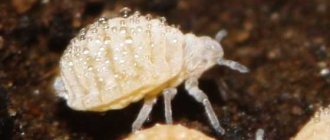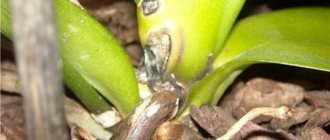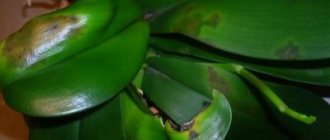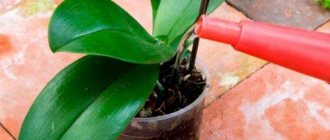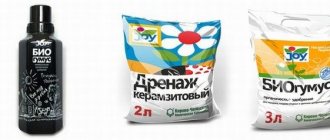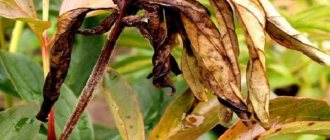Updated: 07/09/2021 12:25:27
Fungal diseases, which include root rot, are very dangerous. They show high tolerance to protective drugs and spread quickly. If left untreated, root rot can cause significant crop losses. And in the case of intensive development, it will completely destroy it all. In addition to a decrease in yield, when crops are affected by rot, the quality of the harvested fruits and grain deteriorates.
Description and photo
The stem of a diseased plant begins to darken, after which the infection spreads to the roots and the root system rots. This leads first to withering of the ground part, and then to complete death.
The causes of root rot are:
- waterlogged soil is the most favorite place for the development and reproduction of fungal infections;
- insufficient disinfection of contaminated soil before sowing seeds;
- poor disinfection of garden tools or growing containers in which rot was found;
- poor quality planting care.
Symptoms of root rot infection of plantings can be:
- slowdown in growth
- change in leaf color,
- the appearance of brown spots on the foliage,
- wilting and lodging of the ground part,
- drying of the foliage and the appearance of constrictions on it.
Fungal spores of root rot spread very easily through the air, with splashes of water during watering or rain, and are carried on clothing, hands and garden tools, and by insects. The disease can also spread to a plant through mechanical damage to the roots or stem. The pathogens persist for a long time in the soil and in the remains of infected specimens.
What is plant root rot and how to treat it?
Everyone who has at least a small piece of land in their dacha tries to grow a rich and high-quality harvest on it. Vegetables from our own plot have a rich supply of vitamins, are environmentally friendly and are good for health.
However, if not properly cared for, plants can suffer from root rot, which destroys seedlings and leads to the complete death of the planting. Where does this disease come from? How to deal with it and what preventive measures should be taken?
What is plant root rot?
Root rot is a fungal disease that affects vegetables, flowers and even trees. The causative agents of the disease are various kinds of molds and marsupial fungi that destroy the root, stem and root collar of the plant.
Most often, vegetables are affected by parasites from the genus Physarium, Pythium and Phytophthora, which lead to browning and rotting of the roots, wilting of the tops and the appearance of spots on the leaves.
Where does root rot come from?
Infection with root rot can occur both in open ground and in greenhouses. Parasites live in the ground on plant debris and when planting seedlings, they begin to feed on its roots.
In addition, fungal spores are carried by wind, insects, watering, and through contaminated garden tools. The most common cause of root rot development is excessive soil moisture. If a lot of moisture collects in the beds, then the soil loses its breathability, and fungi as a result receive favorable conditions for reproduction.
What are the symptoms of root rot infection?
The first signs of root rot infection are wilting of seedlings and yellowing of leaves. The stem of young plants becomes watery and thins, after which the seedlings die.
To accurately determine root rot, you need to remove the plant from the ground and examine its roots. They become brown or black, soft to the touch, and sometimes simply fall off when touched. Healthy roots can also be black, but they have good turgor and are hard and flexible.
How to treat plants for root rot?
In most cases, affected plants cannot be treated because their root system is completely destroyed. However, if root rot is detected in the garden, it is necessary to thoroughly chemically treat the healthy planting in order to avoid disease of neighboring seedlings.
Before treatment, you should inspect the entire area and remove diseased plants along with the soil, and then spray the remaining seedlings with fungicides. Root rot can be combated with commercial preparations (Fitosporin, Fundazol, Baktofit) or with a 5% solution of copper sulfate, which is used to water the beds with plants.
How to prevent root rot?
Preventive measures are the main factor preventing the development of root rot. To completely eliminate the possibility of the disease occurring, it is necessary to promptly remove plant debris from the garden, disinfect the soil and provide the plants with comfortable conditions for development.
Before planting seedlings, it is advisable to chemically disinfect the soil with quicklime or formaldehyde, and as a drastic measure, completely remove the top layer of contaminated soil.
In the process of growing vegetables, you should follow the norms of fertilizing and watering, trying to avoid excessive soil moisture. It is important to regularly apply a balanced complex of fertilizers to the soil, including nitrogen, potassium and calcium.
The best means of protection against fungi in open ground is crop rotation, which involves annual alternation of different types of plants in one area. Most often, diseases occur on moist soils, so it is advisable to periodically improve the composition of the soil by adding gravel and compost.
Pathogens
There are many causative agents of root rot. Cereal crops are affected by the fungus Helminthosporosum sativum, Ophiobolus graminis, and Fusarium. In corn, the pathogens are fungi of the genus Fusarium, Diplodia, Pythium, Penicillin, and Rhizoctonia. In legumes, the disease is caused by fungi of the genus Aphanomyces, Thielaviopsis, Sclerutium, Rhizoctonia and Pythium. Tomatoes, cucumbers, potatoes and cabbage with onions are affected by the fungus Phytophthorum.
These fungal pathogens affect not only the above-listed crops, but also many others.
What drugs are there for effective control?
- Trichodermin is a fungicidal drug against many fungal and bacterial diseases. Very effective in combating root rot.
- Trichophyte is a biological preparation to combat root rot and gray mold.
- Fitolavin is a biological preparation for combating many putrefactive diseases during the seedling period.
- Fundazole is a very powerful remedy, but it is highly toxic to people and animals. Therefore, it is used only on ornamental plants, trees and shrubs.
- Topaz is a systemic remedy, but it gives the best results in prevention rather than in treatment of the disease.
- Previkur Energy is a new systemic medicine for root rot and other putrefactive diseases. Heals and stimulates the root system of herbs, trees and shrubs.
- Mikosan is a biological preparation intended for garden and indoor crops. Promotes the production of specific antibodies that form immunity to fungal and bacterial diseases.
- Copper sulfate is an antiseptic and fungicide at the same time. It is used for gardening and indoor plants in various doses depending on needs.
- Maxim is a systemic fungicide against root rot and many other diseases. Moderately toxic to humans and animals. It is also used to disinfect soil.
- Discor is a fungicidal remedy for many diseases of indoor and garden plants. Not dangerous for humans and animals. Has no smell.
- Glyokladin is a remedy for putrefactive diseases in garden beds.
- Gamair is a complex biological product for many diseases of indoor and garden crops.
- Vitaros is a means for treating seed material, bulbs and tubers against putrefactive diseases.
- Bordeaux mixture is one of the most highly effective drugs in the fight against many fungal and bacterial diseases.
All medications must be used strictly according to the instructions so as not to cause harm to yourself, animals and the environment.
List of effective drugs
Chemical fungicides
Abiga Peak
A contact agent effective against many bacterial and fungal plant diseases.
The package contains a concentrated aqueous suspension.
Copper oxychloride provides a fungicidal effect.
Abiga-Pik is used for the prevention and treatment of many cultivated and wild plants.
The drug is not toxic to insects, and there is no toxicity to plants.
Acrobat MC (Dimethomorph or Mancozeb)
Systemic contact fungicide that helps against diseases such as:
- potato late blight and alternaria;
- peronosporosis of cucumbers;
- grape mildew, etc.
Dangerous product. Suitable for spraying plants during the growing season. Treatment is not carried out 20-30 days before harvest. (for beets – 50 days).
Bordeaux mixture
The active ingredients are copper sulfate and calcium hydroxide. It is used for many diseases of fruits and berries, vegetables, ornamental crops and flowers.
The period of action of the drug is 7-12 days.
Bordeaux mixture is compatible with most pesticides and systemic fungicides.
Copper sulfate
Contact fungicide with a wide spectrum of action.
It is used to destroy scab, leaf spot, powdery mildew, and anthracnose of apple trees. They can be used to process fruit and berry crops, ornamental crops, and shrubs.
The active ingredient is copper sulfate.
The effect appears after 2 hours. The period of protective action is 7-12 days. Treatment is prohibited during plant flowering and at air temperatures above 30°C.
Oksikhom
Systemic contact drug.
The active ingredients are oxadixil and copper oxychloride. It is used to destroy late blight and macrosporiosis of potatoes and tomatoes, as well as powdery downy mildew of cucumbers. Works well on fungi of the oomycete subclass.
Refers to hazardous substances.
Rayok (Skor)
Systemic fungicide, a product with a pronounced therapeutic, long-term preventive effect.
The active ingredient is difenoconazole.
It is used to destroy scab, powdery mildew, leaf curl, late blight, Alternaria blight, coccomycosis, clasterosporiosis, etc.
Topaz
Systemic fungicide. The active substance is an antifungal compound - penconazole. It is used as a prevention of mycoses in cultivated plants. Effective in the fight against powdery mildew and rust. The concentrated emulsion is sold in glass packaging.
Screen KS
Contact fungicide, highly effective against potato late blight, mildew and black spot of grapes, apple scab.
The active substance is fluazinam.
Concentrated suspension with low toxicity, non-toxic to plants.
Quadris
A contact agent with a wide spectrum of action.
The active ingredient is azoxystrobin.
The concentrated suspension effectively fights plant mycoses.
The substance is used to treat grapes, potatoes, onions, tomatoes and cucumbers, as well as sports lawns.
Profit Gold
Systemic contact agent effective against various fungal diseases of cultivated plants.
The active ingredients are cymoxanil (penetrates into plant tissue) and famoxadone (remains on the surface in the form of a film for a long time).
Brown granules emit a slight specific odor and are sold in packages of different weights.
Thanos
A deep-acting contact agent that is quickly absorbed into plant tissue. After using the drug, the fungus dies within 1-2 days.
The active ingredient is cymoxanil.
The granules are dissolved in water and potatoes, sunflowers, tomatoes and onions are treated with this solution against major crop diseases. The product is wash-off resistant.
Horus
The active ingredient is cyprodinil. An effective remedy against:
- scab, Alternaria blight and moniliosis in pome fruit crops (apple and pear);
- fruit rot, moniliosis, coccomycosis, leaf curl in stone fruit crops;
- rot of berries of grapes;
- leaf scab and powdery mildew in cultivated plants.
Important! The working solution must be used immediately; it is not stored.
The product is resistant to washing off 2 hours after treatment. Works well in damp and cool weather (3-15°C).
Biological fungicides
Agate – 25
Biological product in the form of a liquid paste with a strain of inactivated “Aureofaciens Pseudomonas”.
Effectively fights powdery mildew, mildew, rot, late blight, cladosporiosis, and rust.
Produced in the form of a liquid paste.
For treating plants 1 tbsp. a spoon is diluted in 3 liters of water.
Alirin B
Biological product with beneficial soil microflora. Suppresses the development of fungal plant diseases and prevents fungal pathogens from spreading in the soil.
Protects plants from root rot, septoria, rhizoctonia, late blight and other diseases. The product helps restore beneficial soil microflora after the use of pesticides. Suitable for indoor plants and garden crops.
Gamair
The active substance is a bacterial culture. A biological agent effective against bacterial and fungal diseases in the soil and on plants, such as stem necrosis, soft rot, and bacterial canker of tomatoes. Suitable for indoor plants and garden crops.
Advice! To 10 liters of solution you need to add 1 tbsp. a spoonful of liquid soap or growth stimulant for better adhesion.
The solution cannot be stored. However, it can be combined with biological products, insecticides, fungicides, and growth regulators.
Fitosporin-M
Biological fungicide with spores and living cells of Bacillus subtilis. It is used as a preventive measure against fungal diseases of eggplant, zucchini, cucumbers and other cultivated plants. Effectively fights against mycoses. Can be combined with chemical pesticides, fertilizers and growth regulators.
Fundazol
The active ingredient is benomyl. Systemic protective and eradicating agent. It is used for treating seeds to protect against fungal diseases of seeds and leaves of plants (spotting, powdery mildew, gray rot). Suitable for effective treatment.
Last treatment before harvest:
- cucumbers – 7 days;
- tomatoes – 10 days;
- apple, pear – 20 days.
Compatible with pesticides, fertilizers and growth regulators. Incompatible with alkaline products.
Important! If a precipitate forms after mixing Fundazol with another drug, these drugs are not compatible.
You should not use tank mixtures or alternate with benzimidazole or thiophanate group products.
Folk remedies
- Chalk - 3 large spoons, copper sulfate - 1 small spoon, water - half a liter. Mix all ingredients until mushy and apply this paste to the upper part of the stem, root collar and upper part of the roots.
- Mix crushed chalk into dust with sifted wood ash in a ratio of 1 to 1. Treat the affected parts of the plant with this powder.
- Dilute iodine with water in a ratio of 1 to 4. The stem and upper part of the roots are treated with this solution.
- Prepare a slightly pinkish solution of potassium permanganate. Water it under the root and the ground around the stem of the affected specimen.
- 1 liter of milk, 10 liters of water, 30 drops of iodine, 20 g of finely grated laundry soap. Mix all ingredients until completely dissolved. Treat diseased crops with this solution every 10 days for a month.
Related article: Family of Acanthus plants: list, description, genera and species
Prevention: how to prevent disease
- In order to prevent plants from becoming infected with root rot, you need to choose seed material that is resistant to this disease.
- Before sowing seeds and seedlings, it is imperative to disinfect the soil by calcination or using various preparations. Seeds should also be disinfected.
- After contact with infected crops, garden tools must be treated with drugs or disinfected in any convenient way.
- After contact with an infected plant, be sure to wash your hands with soap and wipe with alcohol to prevent the spores from being transferred to healthy plantings.
- If the plant has died, it must be removed from the site along with the top layer of soil. Burn the remains and disinfect the soil.
- Excessive application of fertilizers to the soil can also lead to the proliferation of putrefactive bacteria and fungi. Therefore, it is necessary to comply with the norms for applying fertilizing.
- Avoid overmoistening the soil and stagnating moisture in the area. Treat crops and seedlings for prevention with pesticides and fungicides. Thin out the seedlings to allow more air to reach the roots.
- Carry out foliar feeding.
- Destroy planting residues and weeds after harvesting.
- If plants are grown in a greenhouse, then you need to ventilate it often and not create excessive humidity in the room.
By adhering to these simple rules, it is possible to avoid infection of vegetation with root rot. But if this happens and no action is taken, then all the crops may die. The harvest will be low and cannot be stored for long.
Plants affected by root rot are not suitable for food. But even if for some reason you eat a diseased specimen, nothing will happen other than a slight upset of the gastrointestinal tract.
Adviсe
- You should choose plants that are less prone to root rot. Detailed information can be obtained on the Internet or by contacting specialists.
- To stop the disease and preserve neighboring plants, the infected specimen should be removed along with the soil.
- Do not overwater the plants. It is worth waiting until the soil becomes dry, and also monitor the accumulation of water.
- You should take care of the water permeability of the soil in advance by digging up the soil before planting and adding compost and gravel to it.
- The condition of the site should be analyzed. If there is damp soil, it is worth building special beds on hills and mixing in better soil.
Root rot
Tomato root rot
Root rot is a common plant disease caused by various types of fungi and sometimes bacteria. It affects seedlings and adult plants.
Root rot on seedlings is called “blackleg”. In seedlings, the tip of the main root dies. The root collar and adventitious roots turn black, later the tissues on them become thinner, and numerous constrictions form. A white or pink coating forms at the sites of infection.
Adult plants stop growing, their leaves turn yellow and wither, the shoots dry out, and the ovaries crumble. If you remove a diseased plant from the ground, the darkened, plaque-covered roots fall off the stem when touched. Plants often die completely from root rot.
Causes
Infection occurs during prolonged waterlogging of the soil. Access of oxygen to the roots becomes difficult, the plant weakens, and its roots die. The development of the disease is facilitated by watering with cold water, planting in unheated soil, and sharp fluctuations in air and soil temperatures.
The disease can spread to healthy plants even when normal watering is restored. In this case, the cause of the infection is pathogenic fungi in the soil. They do not manifest themselves for a long time, and even a single waterlogging of the soil can be the impetus for reproduction. In rare cases, the source of infection is seeds.
Prevention of root rot is the best treatment
The most important method of control, which limits the development of any variants of root rot, including root rot, is the incorporation of plant debris.
But in this case it is very important that the plant residues rot completely before new crops are planted.
If the remains remain in the root layer or slightly below without access to air and do not rot, this means that after a year when plowing, the entire infection will be realized again.
This technique is found in no-till. The whole task of no-till is the transformation of plant residues and the preservation of humus. With proper no-till, the residues should rot before sowing the next crop.
Root rot of various plants
Tomatov
On seedlings, root rot appears as a “black leg”, on adult plants as Fusarium and Verticillium wilt. Chlorotic spots form on the leaves, which darken over time and crack in the center. The bush as a whole withers, some of the leaves become bright yellow. Black stripes appear on the petioles and stems. The fruits are covered with small dark spots with a white border.
In addition to tomatoes, root rot affects other nightshade crops - peppers and eggplants .
Ogurtsov
Characteristic symptoms of the disease are browning and loosening of the root collar and roots. On the aboveground part, the lower leaves turn yellow, and those that grow higher fade. The ovaries dry out and the fruits do not have time to develop.
Other related plants are also susceptible to the disease - zucchini, pumpkin, melon, watermelon .
Fruit crops
Apple, pear, grape, apricot, and cherry trees suffer from root rot . Affected roots become loose, bark and wood turn black. Plants stop growing and produce little root growth. The leaves grow small, they turn yellow and dry out. Due to the disease, the fruits do not have time to set.
Houseplants
Overmoistening affects Saintpaulias, cyclamens, gloxinias, and citrus fruits . The roots turn brown and rot, and the root part of the stem becomes thinner. In adult plants the leaves turn yellow, in young plants the foliage does not have time to change color, the roots quickly die and the plant dies.
Black leg seedling disease
The causative agents of the disease are fungi (most often Olpidium and Pythium), which have adapted to exist in the surface layers of the soil. They feed on dead plant tissues, but when they come into contact with roots and root collars in high humidity conditions, they switch to living plants.
Black leg on tomato and pepper seedlings
The source of problems, as a rule, lies in the soil. In addition, the development of blackleg is facilitated by thickened sowing, excessive watering, poor ventilation, and sudden changes in temperature and soil humidity.
The development of the disease accelerates at high temperatures and insufficient ventilation of crops. Blackleg appears on weakened seedlings, so it is important to adhere to the watering regime and regularly ventilate the greenhouse. Choosing resistant varieties and purchasing quality seeds will help.
Means of struggle
Chemical and biological drugs
Previkur Energy
The fungicide is used to treat seeds, water the soil and spray plants. For root rot, prepare a working solution from 3 ml of the drug and 2 liters of water. Use 4-5 times per season, the last time no later than 3 weeks before harvest.
Related article: List of plants starting with the letter G: indoor, garden and vegetable gardens
Fundazol
Contact-systemic fungicide for treating planting material and spraying vegetative plants. Flower bulbs are immersed for 3–4 hours in a solution prepared from 10 g of the drug and 2 liters of water, potato tubers and other vegetables are sprayed with a solution of 10 g of fungicide and 0.5 liters of water. For root rot, the leaves and soil are treated 2 times with a 0.1% working solution.
Maxim M
The contents of the ampoule are added to 1 liter of water. The resulting solution is used during the day for watering or spraying.
Glyocladin
The biological product is produced in the form of tablets. Use without prior dissolution in water. Tablets (1 piece per 300 ml of soil) are added to the ground when picking seedlings or transplanting plants to a permanent place.
Alirin-B
For irrigation, prepare a solution - dissolve 2 tablets in 10 liters of water. The drug is used 3 times with a break of 7 days.
Trichodermin
An effective biological product for treating plants at the initial stage of the disease. Available in powder or suspension form.
The concentrate is immediately poured with water, and a working solution is first prepared from the powder - 1 g per 200 ml of water, left for 2 hours in a dark and warm place for maturation. For watering and spraying, 5 g of concentrate is diluted in 1 liter of water.
Traditional methods
- The soil is disinfected with a solution of potassium permanganate and the plants are sprayed. For foliar treatment, use a 3% solution (3 g of the drug per 10 liters of water), the seedlings are watered with a 0.2% solution.
- Damaged areas on the stems in the root zone are sprinkled with charcoal or ash.
- In addition to the use of fungicides, at the first signs of infection, plants are given “first aid” by removing infected parts: stems or roots. The diseased specimen is dug up and carefully examined. If all the roots are wet and darkened, then the plant has no chance to survive.
- If most of the roots are elastic and healthy, then they are washed well with water. Then rotten roots, leaves, and shoots are cut off. The tops of healthy stems are also removed in order to balance the above-ground part with the root system that has lost volume. The plant is transplanted into new soil and placed in a shaded place. Water with caution only when it has taken root.
How to cure seedlings from blackleg
In case of large foci of disease, urgently pick up healthy seedlings into other containers. Seedlings that have already suffered cannot be saved. The container with the picked plants should be placed in a warm place, shaded from the sun's rays. 5-6 days after the seedlings have taken root, they can be placed in a cooler place. Add a fungicide to the water for the first watering according to the instructions (for example, “Maxim”, “Fitosporin”, “Baktofit” 0.5–1%).
If blackleg has developed on greenhouse seedlings, water the soil with a biological product (Alirin-B + Gamair, 4 tablets per 10 liters of water).
Go to the material “How to steam the soil”
Go to the material “Picking seedlings”
Prevention
The main preventive measures are maintaining optimal soil moisture and temperature.
For seedlings, loose soil that is well permeable to air and moisture is used - a mixture of turf soil and humus with the addition of river sand or well-decomposed peat.
The seedlings are watered with warm water at a temperature of at least 20°C as the top layer of soil dries.
At the first signs, when only a few specimens are sick, they are immediately removed from the garden so that the disease does not become widespread. In such cases, a small layer of top soil is removed and peat, dry sand or sawdust is added.
Indoor plants are planted in pots and containers with drainage holes.
When growing vegetables and annual ornamental crops, crop rotation is observed to avoid the accumulation of fungi in the soil that cause infection.
Root rot is caused by various pathogenic fungi, but in all cases it is important not to miss time and begin treatment so as not to lose all the plants.
You will learn more about the fight against root rot in the video.
How to use correctly
Correct use of fungicides involves three actions: seed disinfection, spraying of green mass and soil treatment. Let's look at each in more detail.
Disinfection of seeds before planting
The seed treatment process varies:
- Dry method using powder preparation.
- Dressing with dry agent and water without subsequent drying of the seeds.
- Treatment of seed material with a mixture with a hydrophilic film-forming composition.
- Encapsulation . The disinfectant is applied to the seeds as part of a protective-stimulating mixture, forming a capsule around the seed.
Spraying
All above-ground parts of the crop are subject to treatment. The procedure is carried out once, if the solution was not washed away by rain and there is no risk of re-infection of young shoots.
Tillage
To destroy pathogens living in the soil, the soil is treated with fungicides. At the same time, the selectivity of the drugs is minimal. Not only mushrooms will die, but also all bacteria, insects and other living creatures. Therefore, at least two weeks must pass between treatment and sowing.
Spraying with fungicides should be carried out on the lower part of the leaf; through the pores located there, the plant receives nutrition. This is the only way the drug is completely absorbed.
Remedies for root rot on indoor flowers
Indoor plants decorate the interior when they are healthy and look good. The appearance of root rot leads to the fact that first the roots die, and then the flower loses its decorative effect and dies. Basically, this problem arises due to improper care, and you need to start fighting it immediately. Comprehensive measures will help to cope with root rot.
Fighting fungus
Many specialized products are sold to combat fungal infections. It is enough to go to a gardening store and consult with the seller. As an example, compounds such as fungicides can be used. The only difficulty in using such products is that the gardener will first need to determine the specific type of “parasite” that has become attached to the roots of the plant. In addition, the next step will be to send root samples to the laboratory for testing. And only after this can you determine a fungicide that will be able to cure the plant. However, not all types of rot can be cured. This remedy is more suitable for preventive measures.
Description and causes of the disease
The causative agents of root rot are pathological fungi from the oomycete genus. Most often these are Phytophthora, Pythium, Phytophthora.
Microorganisms may initially be present in the soil without manifesting themselves in any way, and begin to actively develop under conditions that are optimal for them. Particularly dangerous is a type of root rot called late blight, which often attacks young plants, causing them to die in a matter of days. For example, this often happens when seedlings are grown incorrectly.
The main reason that provokes the appearance of root rot is a violation of agricultural technology, namely, waterlogging of the soil. With excessively abundant watering, the soil does not have time to dry out, the earthen ball becomes excessively compacted, and oxygen ceases to flow to the roots.
This leads to the creation of a stable aerobic environment in the root areas. Stagnation of moisture in a pot often occurs at low temperatures; in this case, the water simply does not have time to evaporate between waterings.
The source of infection can be not only contaminated soil, but also used flower pots and contaminated tools.
Symptoms of root rot
The disease often affects vegetable and flower crops grown in the garden, and even grain crops (wheat, barley, oats, rye). She doesn’t shy away from indoor flowers either.
At home, root rot is often found in plants for which excessive watering is detrimental:
Unlike blossom end rot, root damage cannot be detected immediately. The insidiousness of the disease lies in the fact that at first the pathological process takes place underground and remains invisible to the owner of the flowers. At the height of the disease, due to disruption of the roots, symptoms also appear on the vegetative part. The leaves begin to turn yellow and wither, and the plant looks lifeless. Sometimes the grower mistakes these signs for a lack of moisture and floods the flower even more.
Related article: Shade-tolerant indoor plants: names and photos, types
Root rot can only be accurately recognized after removing the plant from the pot. You need to carefully examine the roots. If they turn out to be soft and black, then the suspicions are confirmed.
If you touch diseased roots, they will immediately fall off. The disease especially quickly affects newly rooted cuttings and young seedlings. In this case, signs in the form of yellowing and wilting of leaves do not even have time to appear. In a matter of days, the roots and lower part of the stem rot completely.
Symptoms
Root rot is a fungal disease that attacks the roots of a plant, which subsequently leads to its complete death. Representatives of indoor flora such as orchids, ficus, cacti, violets, aloe and others are very sensitive to the pathogens of this disease. These plants react quite sharply to waterlogging of the soil mixture.
The symptoms of root rot are completely non-specific, so the disease is usually detected already at its peak. A plant affected by the fungus becomes weak, loses its natural color, turns yellow and withers. All these signs can be attributed to anything, for example, to insufficient watering. Therefore, root rot is difficult to notice immediately.
A specific symptom for this disease is a change in the root system of the plant. The roots turn black, become soft and die. But this can only be found out by removing the plant from the pot. Root rot is especially destructive for young flowers; they die almost immediately.
Treatment with folk remedies
You can get rid of root rot on indoor plants using folk remedies only at the initial stage of the infection. The lower part of the stem and the surface layer of soil are watered with the prepared solutions, and the roots are treated. For this purpose you can use:
- Potassium permanganate. It is necessary to prepare a pale pink solution of potassium permanganate and water the plant at the base of the stem and around it. This product should not be used in strong concentration, otherwise the roots may burn.
- Iodine with milk. For irrigation, prepare a solution of 1 liter of milk, 30 drops of iodine, 30 g of crushed plain soap per 10 liters of water. To obtain the effect, you will need 3 treatments with an interval of 10 days. A necessary condition is the normalization of the watering regime for the diseased plant.
- Paste based on chalk and copper sulfate. You need to mix 3 tbsp. spoons of crushed chalk, 1 teaspoon of copper sulfate and 0.5 liters of water. After mixing, a liquid with a creamy consistency is obtained, which should be used to lubricate the lower part of the stem, root collar and affected roots. After treatment, the roots are slightly dried and the plant is planted in fresh soil.
- Wood ash and chalk. Both components are mixed in equal proportions, after which the roots of the diseased plant, extracted from the ground, are dusted with powder. At the end of the treatment, the plant is replanted.
If root rot is detected, it is better not to be lazy and replace the soil in the pot with disinfected soil. Fresh soil should be shed in advance with a solution of potassium permanganate or boiling water. This should be done a week before transplanting, so that in the remaining time the soil will be populated by beneficial microorganisms. In the future, it will be necessary to water the flowers less often and with less water.
How to treat
Fungi that cause root rot are very viable. Since they are resistant even to very strong pesticides, diseased plants are destroyed when the disease develops intensively. This method helps prevent the spread of spores and damage to other plant crops. The dug up specimen is destroyed and the soil is disinfected.
Since the soil becomes the source of spread of the harmful disease, in our opinion, it is advisable to resort to treatment only for indoor flowers and seedlings grown in separate pots. Under such conditions, even if the spores remain in the ground, they will not affect neighboring plants.
Chemical methods of protection
If it is possible to diagnose the disease in the early stages of development on single plants, they are treated. Effective chemical and biological means of protection - fungicides:
- Previkur Energy.
A broad-spectrum drug. It is suitable for many crops, but due to its high cost, analogues can be purchased.
- "Topaz"
. The biological product does not accumulate in fruits, therefore it is safe both for plants and for humans who will consume the harvest collected from treated crops. Used on trees, bushes and herbaceous plants against root rot, rust and powdery mildew.
- "Fitolavin"
. It is used not only as a fungicide, but also as a broad-spectrum pesticide against some insects and weeds. But the method of preparing the working liquid and the consumption rate depend on the object of treatment.
Folk remedies
Since the pathogen exhibits high resistance even to pesticides, it will not be possible to defeat it using folk remedies. In our opinion, it is possible to slow down the process of plant decay and harvest. The products are prepared according to several recipes:
- You will need chalk, coal and ash. The components are ground into powder and mixed. The mixture is sprinkled on the root collar, the bare part of the rhizome and the base of the stem.
- Take crushed chalk in the amount of 3 tbsp. l., copper sulfate - 1 tsp, water - ½ liter jar. The components are mixed to prepare the mash. The resulting solution is lubricated with the lower part of the stem and the root collar.
Use of drugs
A guaranteed result can be obtained by treating a fungal infection with fungicides.
If the flower begins to wither when the soil in the pot is excessively wet, it must be urgently removed from the container and action taken. The roots are washed with water, all affected areas are cut off and soaked in a fungicidal solution.
Effective preparations for root rot:
- “Alirin-B” – 1 tablet per 5 liters of water;
- “Vitaros” – 2 ml per 1 liter of water;
- “Oxychom” – 10 g per 5 liters of water;
- “Ordan” – 5 g per 1 liter of water;
- “Gamair” – 2 tablets per 1 liter of water;
- “Hom” – 20 g per 5 liters of water;
- “Previkur Energy” – 3 ml per 2 liters of water;
- “Baktofit” – 10 ml per 5 liters of water.
The solution is prepared immediately before treatment. The roots should remain in it for 15–20 minutes. Features of use are indicated in the instructions for the drug.
Preventive measures
Prevention of fungal infection on the roots begins even before planting the flower in a pot. In the future, each plant needs suitable care.
- When propagated by cuttings, the stem is immersed in a fungicide solution for 5–10 minutes and only then planted.
- If seeds are used, they must be treated before sowing. This can be done using a pale solution of potassium permanganate or one of the fungicides.
- Flower pots should be washed with soap and rinsed with boiling water before use.
- The soil also needs sterilization. There is no need to cultivate the purchased land; the producer has already done this.
- The tool used for planting flowers must be clean; before carrying out work, it is additionally wiped with alcohol, vodka or a solution of Chlorhexidine.
- If you had to handle a diseased flower, you must wash your hands thoroughly before touching other plants.
- In the room, if possible, you need to maintain a humidity level of 40–60% and a temperature of 18°C, and also ventilate it regularly.
- Indoor plants should be watered with a moderate amount of water and not too often, taking into account the individual needs of each flower. Most plants need the top layer of soil to dry out between waterings.
- Stagnant moisture is especially harmful for succulents and epiphytic vegetation (for example, orchids).
- Fertilizer should be applied in doses, since excess minerals can provoke the growth of pathogenic microflora.
So, in order to avoid fungal diseases, one of which is root rot, you need to properly care for your flowers, starting from the planting stage. It is necessary to take into account the individual needs of the plant for moisture and adjust the watering schedule when external conditions change. The first signs of the disease should be a signal for the immediate start of treatment.
Sources:
https://3vedra.com/bolezni-rastenij/kornevaya-gnil.html https://sad6sotok.ru/%D0%BA%D0%BE%D1%80%D0%BD%D0%B5%D0%B2% D0%B0%D1%8F-%D0%B3%D0%BD%D0%B8%D0%BB%D1%8C.html https://goodgrunt.ru/bolezni/kornevaya-gnil.html
